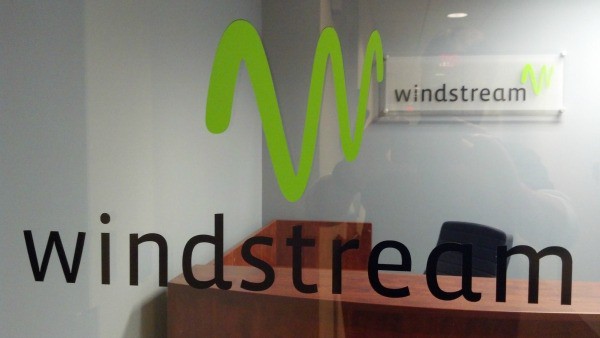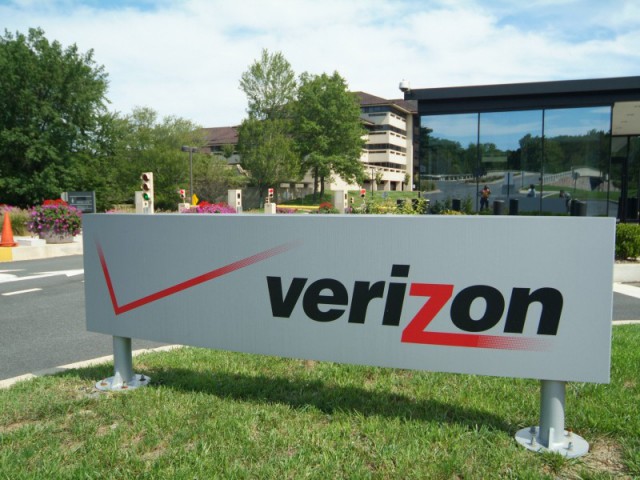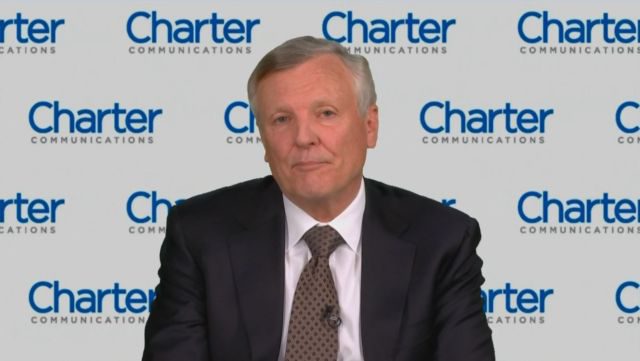
An unhappy customer in Georgia.
Victor Brown, like many residential customers in rural northeastern Ohio, has one option for internet access — Windstream, an independent phone company that typically serves areas larger companies like AT&T, Verizon, and CenturyLink forgot. For 17 years, his internet speed has been absolutely consistent, and slow.
“It’s 1.2 Mbps day or night, no more and no less, and for that they are charging me $58 a month,” Brown told Stop the Cap! “In that time, there has never been an upgrade, a real commitment to improve service, or anything except repetitive sales calls and mailers offering to upgrade me to a faster speed level Windstream cannot actually deliver.”
Windsteam has told its investors that it expects to offer 60% of its customers at least 25 Mbps service by the end of 2018. In fact, Brown has already been offered that for nearly a year, but the service is not actually available.
“They will switch you to 25 Mbps today, with the higher bill to boot, but you won’t actually get any better speed than you have right now,” Brown said. “I know because we tried.”
Brown and several of his neighbors all attempted to upgrade to the higher-speed service advertised. Windstream accepted their orders, charged them more, and delivered exactly the same 1.2 Mbps service they have always had.
 “It took a service technician coming out to make it clear to us there was no way we would ever get faster speed because there was too much copper wiring between their office and our homes,” Brown said. “The technician felt for us, and about half of his service calls were disappointing customers like us.”
“It took a service technician coming out to make it clear to us there was no way we would ever get faster speed because there was too much copper wiring between their office and our homes,” Brown said. “The technician felt for us, and about half of his service calls were disappointing customers like us.”
Brown explained the Windstream technician candidly told him that the company’s head office is behind the speed upgrades, but does not actually have a clear understanding of the state of the local network. Marketing then sells customers on better service Windstream’s network is not capable of providing.
“They need to spend money to replace some copper with fiber but there is no money for that,” Brown said. “The most the technician could suggest was installing a bonded DSL connection that would use two different phone lines and deliver 2.4 Mbps. That would come at a price, however.”
Ruth in Cochranton, Penn., is in exactly the same position.
 “We are paying for internet speed that we aren’t receiving,” Ruth complained. “It is so slow that we have a hard time getting a short 50 second video to load. Forget watching a YouTube video, it’s not going to happen.”
“We are paying for internet speed that we aren’t receiving,” Ruth complained. “It is so slow that we have a hard time getting a short 50 second video to load. Forget watching a YouTube video, it’s not going to happen.”
Over in Lilitz, Penn., Eileen and her neighbors were also dealing with temporary phone lines Windstream installed by dropping both on their lawns and then leaving them unburied for nine months. She cannot get anyone from the company to bury the lines despite seven separate phone calls. Down the street, internet and phone outages can last a week after a strong rainstorm hits the area, and since the weather has turned much colder, hum and crackle on the neighborhood’s phone lines have disrupted phone calls and DSL service. Nobody from Windstream has come to fix the problem.
Windstream tells a very different story to its investors in the form of ‘upgrades by press release’ and cheerful investor conference calls that claim dramatic improvements in service and growth. While cable operators are touting increasing availability of gigabit service, phone companies like Windstream are promising to give a little more than half their customers the minimum definition of broadband service — 25/3 Mbps, by the end of this year. Many of Windstream’s other half get nothing close to those speeds, with 1-3 Mbps common in rural areas.
 Wall Street balks at the dollar amounts it would take for Windstream to fully update its network to offer broadband speeds that were common for cable subscribers a decade ago. That kind of network investment would likely drive down the share price, impact shareholder dividends or stock buyback plans, and increase debt. Instead, many phone companies are hoping the federal government will come to the rescue and subsidize rural network improvements through the FCC’s Connect America Fund or government grants. But many of those grants won’t deliver service improvements to existing customers. Instead it will allow rural phone companies to bring broadband to customers who never had it before.
Wall Street balks at the dollar amounts it would take for Windstream to fully update its network to offer broadband speeds that were common for cable subscribers a decade ago. That kind of network investment would likely drive down the share price, impact shareholder dividends or stock buyback plans, and increase debt. Instead, many phone companies are hoping the federal government will come to the rescue and subsidize rural network improvements through the FCC’s Connect America Fund or government grants. But many of those grants won’t deliver service improvements to existing customers. Instead it will allow rural phone companies to bring broadband to customers who never had it before.
Even the threat of new competition has not inspired many investor-owned phone companies to embark on a spending spree. That competition may eventually come from new wireless broadband services like 5G, but most observers predict that will be years away in the rural communities Windstream traditionally serves. Where Windstream does face competition, it often still loses market share, usually to the local cable company.
“My sister has Comcast and although they are evil as can be, at least their internet speed matches what they sell, and it is shockingly fast in comparison to what DSL has given me for nearly 20 years,” Brown said. “Unfortunately, no cable company is going to wire us up. There are only a few houses on my street.”
Brown believes it is time for the federal government to start insisting that investor-owned phone companies do better.
“We have universal service laws for landlines but not for internet? That does not make sense to me,” Brown tells us. “Isn’t it time for the government to insist that all providers deliver at least 25 Mbps service to their customers? They are not going to do it without someone ordering them to.”
 Despite a strong economy, Verizon Communications will shed 10,400 employees and cut $10 billion in costs as part of a transformation initiative promoted by the company’s newest top executive.
Despite a strong economy, Verizon Communications will shed 10,400 employees and cut $10 billion in costs as part of a transformation initiative promoted by the company’s newest top executive.

 Subscribe
Subscribe
 Rutledge told investors he does not see much threat from Verizon FiOS or its newly launched 5G offerings, and has no immediate plans to upgrade service in Verizon service areas because neither offering seems that compelling.
Rutledge told investors he does not see much threat from Verizon FiOS or its newly launched 5G offerings, and has no immediate plans to upgrade service in Verizon service areas because neither offering seems that compelling.
 “It took a service technician coming out to make it clear to us there was no way we would ever get faster speed because there was too much copper wiring between their office and our homes,” Brown said. “The technician felt for us, and about half of his service calls were disappointing customers like us.”
“It took a service technician coming out to make it clear to us there was no way we would ever get faster speed because there was too much copper wiring between their office and our homes,” Brown said. “The technician felt for us, and about half of his service calls were disappointing customers like us.” “We are paying for internet speed that we aren’t receiving,” Ruth complained. “It is so slow that we have a hard time getting a short 50 second video to load. Forget watching a YouTube video, it’s not going to happen.”
“We are paying for internet speed that we aren’t receiving,” Ruth complained. “It is so slow that we have a hard time getting a short 50 second video to load. Forget watching a YouTube video, it’s not going to happen.” Wall Street balks at the dollar amounts it would take for Windstream to fully update its network to offer broadband speeds that were common for cable subscribers a decade ago. That kind of network investment would likely drive down the share price, impact shareholder dividends or stock buyback plans, and increase debt. Instead, many phone companies are hoping the federal government will come to the rescue and subsidize rural network improvements through the FCC’s Connect America Fund or government grants. But many of those grants won’t deliver service improvements to existing customers. Instead it will allow rural phone companies to bring broadband to customers who never had it before.
Wall Street balks at the dollar amounts it would take for Windstream to fully update its network to offer broadband speeds that were common for cable subscribers a decade ago. That kind of network investment would likely drive down the share price, impact shareholder dividends or stock buyback plans, and increase debt. Instead, many phone companies are hoping the federal government will come to the rescue and subsidize rural network improvements through the FCC’s Connect America Fund or government grants. But many of those grants won’t deliver service improvements to existing customers. Instead it will allow rural phone companies to bring broadband to customers who never had it before. Amazon wants to be a major player in live regional sports television, aggressively bidding for the 22 regional sports network that Disney acquired from 21st Century Fox, according to
Amazon wants to be a major player in live regional sports television, aggressively bidding for the 22 regional sports network that Disney acquired from 21st Century Fox, according to 